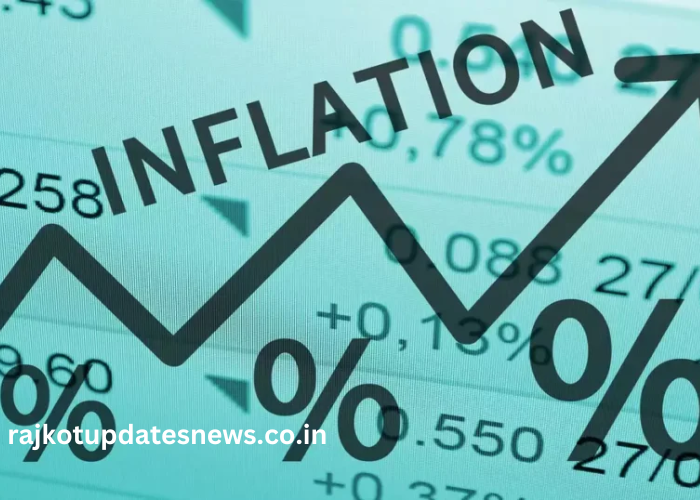
Inflation is a key economic indicator that influences nearly every facet of financial life, from the price of groceries to the cost of borrowing. Recently, the US has experienced a striking inflation increase of 7.5%, the highest in four decades.
This unprecedented surge calls for a detailed exploration of its causes, effects, and implications for both individuals and businesses.
Key Points
- The US inflation rate surged by 7.5%, marking the highest increase in 40 years.
- This inflation spike significantly impacts the cost of living and purchasing power.
- Proactive financial planning is essential to mitigate the effects of this inflation surge.
What Caused the Inflation Increase?
Several factors have contributed to the recent 7.5% inflation jump. Here are the primary drivers:
- Supply Chain Disruptions: The COVID-19 pandemic severely disrupted global supply chains, leading to delays and shortages of essential goods. For instance, semiconductor shortages have impacted the electronics and automotive industries, raising prices for these products.
- Increased Consumer Demand: As economies reopened and consumers returned to spending, demand for goods and services surged. However, supply chains struggled to keep up, exacerbating price increases. The increased demand for home improvement supplies during lockdowns is a notable example.
- Significant Government Spending: The US government implemented large fiscal stimulus measures to support the economy during the pandemic. While these measures were crucial for economic recovery, they also increased the money supply, contributing to higher inflation.
Table 1: Factors Contributing to Inflation
| Factor | Description | Impact |
| Supply Chain Disruptions | Interruptions in the production and distribution of goods | Higher prices due to shortages |
| Increased Consumer Demand | Greater demand post-pandemic | Escalation in prices due to demand-supply mismatch |
| Government Spending | Increased fiscal stimulus and relief packages | Contributes to overall demand and inflation |
How Does Inflation Affect Your Daily Life?
Inflation impacts daily life in numerous ways. As prices for essential items rise, the cost of living increases. For instance, the cost of groceries and gas has seen noticeable hikes, which strains household budgets. If the price of a gallon of milk increases from $3 to $3.21, this seemingly small change adds up across all purchases, significantly affecting monthly expenses.
What Are the Implications for Businesses?
Businesses, both large and small, feel the strain of rising inflation. For small businesses, the impact is often more severe. Increased costs for raw materials and labor can lead to higher prices for consumers, potentially reducing sales.
For example, a small café might face increased costs for coffee beans and utilities, necessitating price hikes for its menu items. Larger corporations may be better positioned to absorb these costs due to their scale, but they too may raise prices to maintain profit margins.
Table 2: Impact of Inflation on Businesses
| Business Type | Effect of Inflation | Potential Response |
| Small Businesses | Higher operational costs | Increase prices or reduce profit margins |
| Large Corporations | Better positioned to absorb costs | Adjust pricing strategies or improve efficiency |
| Retailers | Higher cost of goods sold | Increase product prices to maintain margins |
What Should Consumers Do to Protect Their Finances?
To mitigate the impact of inflation on personal finances, consumers can adopt several strategies:
- Diversify Investments: Investing in assets that tend to appreciate over time, such as real estate or stocks, can help preserve wealth. These investments often grow in value, countering the eroding effect of inflation on cash savings.
- Budgeting More Strictly: Careful budgeting helps manage the increased cost of living. Tracking expenses and identifying areas for cost reduction can prevent overspending and ensure financial stability.
- Focusing on Long-Term Savings: Building and maintaining an emergency fund and contributing to retirement accounts are crucial for financial resilience. This approach helps cushion against unexpected expenses and future financial needs.
How Are Interest Rates Affected by Inflation?
Interest rates are a key tool used by the Federal Reserve to manage inflation. When inflation rises, the Fed often increases interest rates to cool down the economy.
Higher interest rates make borrowing more expensive and encourage saving, which can help reduce inflationary pressures. For example, a higher mortgage rate may slow down the housing market, helping to stabilize home prices.
What is the Long-Term Outlook for Inflation?
Predicting long-term inflation trends involves analyzing economic indicators and policies. While the 7.5% increase is significant, experts anticipate that inflation may moderate as supply chains recover and economic policies take effect. However, the exact trajectory remains uncertain, and ongoing monitoring of economic conditions is essential.
How Can Policy Makers Address High Inflation?
Policymakers have several tools at their disposal to combat high inflation:
- Adjusting Interest Rates: Raising interest rates can help control inflation by reducing borrowing and spending.
- Controlling Government Spending: Reducing fiscal stimulus and government expenditures can help lower the overall demand in the economy.
- Implementing Fiscal Policies: Targeted fiscal policies, such as tax adjustments or subsidies, can help stabilize prices and support economic balance.
Conclusion
The 7.5% inflation increase marks a significant shift in the economic landscape, with far-reaching implications for both individuals and businesses. By understanding the causes and effects of this inflation surge, individuals can make informed financial decisions and adopt strategies to safeguard their financial well-being. As the economy adjusts, staying informed and proactive will be crucial for navigating these challenging times.
FAQ’s
- What caused the 7.5% inflation increase in the US?
The inflation increase was driven by supply chain disruptions, increased consumer demand, and extensive government spending.
- How does a 7.5% inflation rate affect consumers?
Consumers face higher prices for goods and services, which impacts their overall cost of living and purchasing power.
- What are the effects of inflation on businesses?
Businesses experience higher costs for materials and labor, which can lead to increased prices for consumers and reduced profit margins.
- How can individuals protect their finances from inflation?
Individuals can protect their finances by investing in appreciating assets, budgeting carefully, and focusing on long-term savings.
- What role do interest rates play in managing inflation?
Interest rates are adjusted by the Federal Reserve to control inflation by influencing borrowing costs and encouraging savings.


